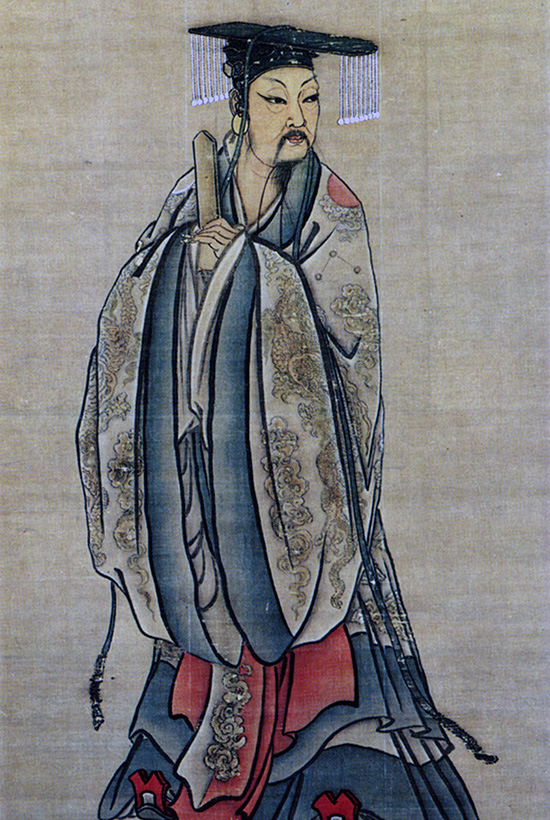As in Egypt (Nile River), Mesopotamia (Euphrates and Tigris), and along the Indus River, Chinese civilization began within the Yellow River(Huáng Hé). Around 4000 BC, Chinese huge area contained an infinite amount of ethnic groups and languages. The course of Chinese history, however, is in part dominated by a single ethnic group and language. This civilization history, in which a vast area of different ethnic groups became, over time, a more or less single culture, began in the Yellow River Valley.
The Yellow River is the northernmost of the major Chinese rivers. Directly to the south is the Yangtze River; south of the Yangtze is the West River; south of the West River is the Red River. Around 4000 BC, when this area was much more temperate and forested, populations around the southern bend of the Yellow River began agriculture. They sowed millet, but sometime later, the Chinese began cultivating rice to the south, near the Huai River. These were a Neolithic, tribal people who used stone tools. Archeologist’s know also that they domesticated animals very early on, but this people still continued as a hunter society as well.
Remains of game animals are almost as common as domestic animals in these villages. There is no much information’s about them for they left no records. It’s believed that tribal warfare was common and that they may have had some form of ancestor worship, but these are mere guesses.
Different theories about early Chinese civilization



In the Chinese version of history, however, history begins with three semi-mystical and legendary individuals who taught the Chinese the arts of civilization around 2800-2600 BC: Fu Hsi (also Fu Xi), the inventor of writing, hunting, trapping, and fishing; Shen Nung (or Shennong), the inventor of agriculture and mercantilism, and the Yellow Emperor also known as Huang-ti (around 2700 BC), who invented government and Taoist philosophy. While Western historians dismiss Fu Hsi, Shen Nung and Yellow Emperor as legend, they were regarded as historical fact for most of Chinese history. Acording to Chinese legends Pangu was said to be the creation god. He was a giant sleeping in an egg of chaos. As he awoke, he stood up and divided the sky and the earth. Pangu then died after standing up, and his body turned into rivers, mountains, plants, animals, and everything else, among which is a powerful being known as Hua Hsu. Hua Hsu gave birth to a twin brother and sister, Fu Xi and Nü Wa. Many Chinese people today believe that Hua Hsu was a leader during the matriarchal society (ca. 2,600 BCE) as early Chinese developed language skill while Fu Xi and Nü Wa were leaders in the early patriarchal society (ca. 2,600 BCE) while Chinese began the marriage rituals.
The Chinese believed that the Three Cultural Heroes (Fu Hsi, Shen Nung and Yellow Emperor) were followed by the Three Sage Kings, Yao (arround 2356-2255 BC), Shun also known as Chonghua (around 2233-2184 BC), and Yu the Great (rule began in 2205 BC). These Sage Kings ruled with perfect wisdom, clarity, and virtue. In the Chinese model of history, human events follow discernible cycles in which times of great virtue and wisdom are followed by times of decadence and decline. Still, Chinese historians believed the Sage Kings rule as the most virtuous time in Chinese history.
The Xia Dynasty, around 2205-1600 BC
According to the some Chinese historians, the last of the sage kings, Yu the Great, founded a dynasty of kings, the Xia. The Xia began with virtue and wisdom, and ended with the rule of latest king Jie who was decadent and cruel. King Jie is known to have lived a lavish lifestyle with slaves and treated his people with extreme cruelty. Around 1600 BC, Jie was defeated by Tang (also known as Cheng Tang) of Shang, bringing an end to the Xia Dynasty that lasted about 500 years, and a rise to the new Shang Dynasty.
There is, however, absolutely no evidence, archaeological or otherwise, that supports this account of the early civilization in China. This lack of evidence has led historians to relegate the entire account, from the Cultural Heroes (Fu Hsi, Shen Nung and Yellow Emperor) to the Xia dynasty, to the realm of mythology. Second, the Shang dynasty that the Chinese claimed followed the Xia, was also believed to be mythological until archaeological evidence appeared in the 1920’s.
